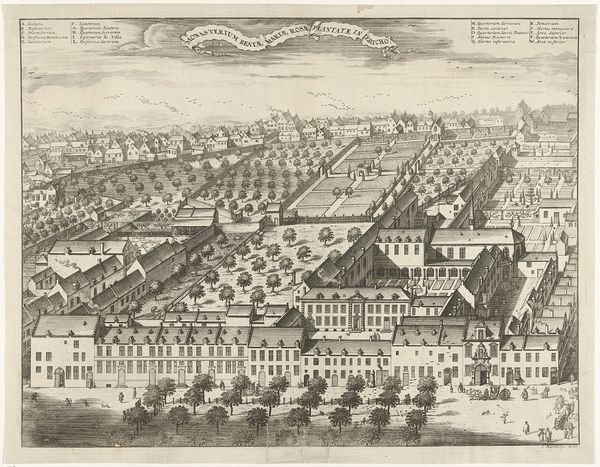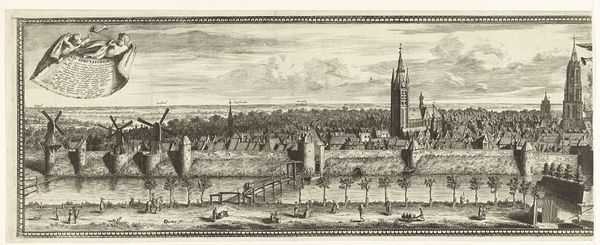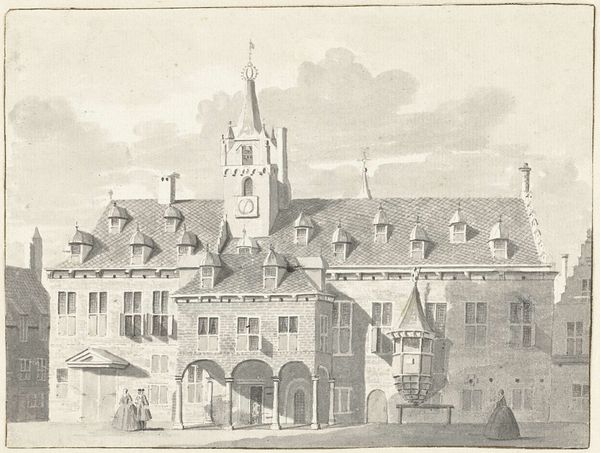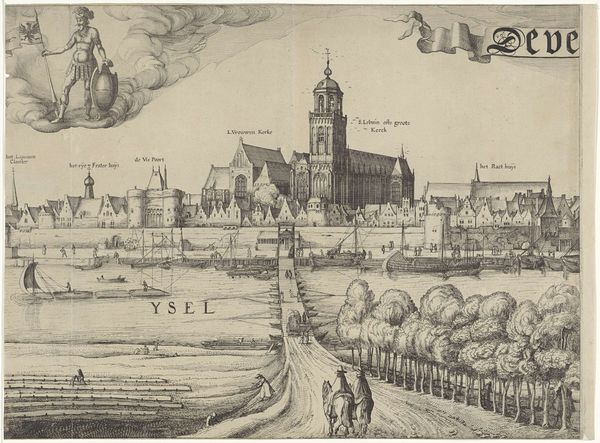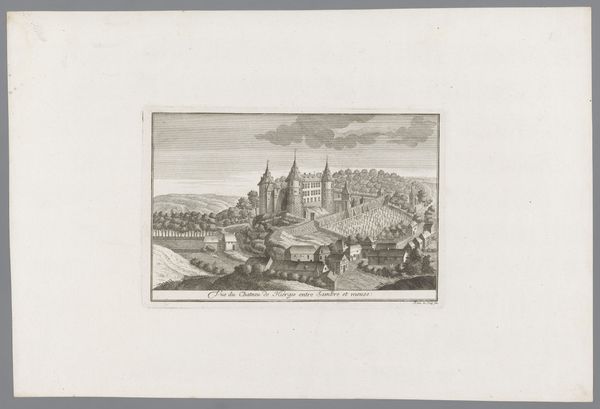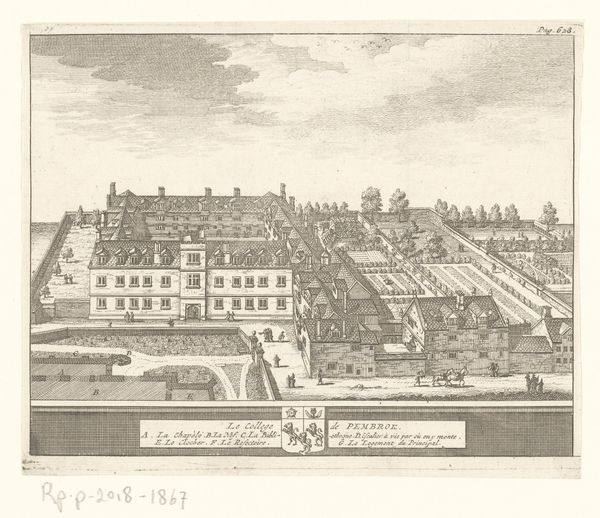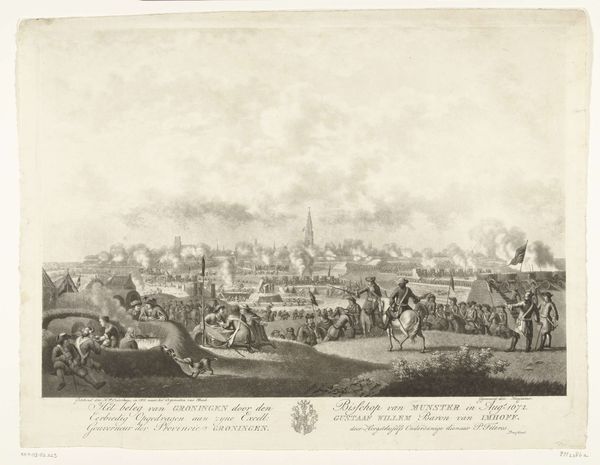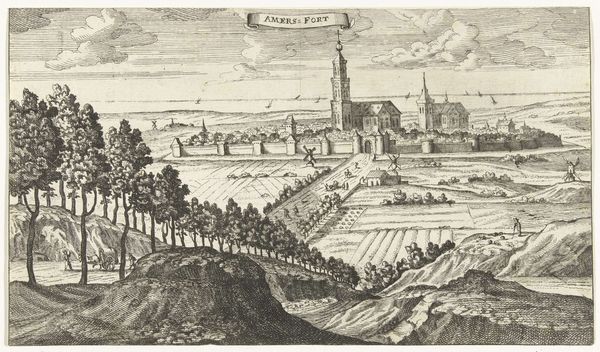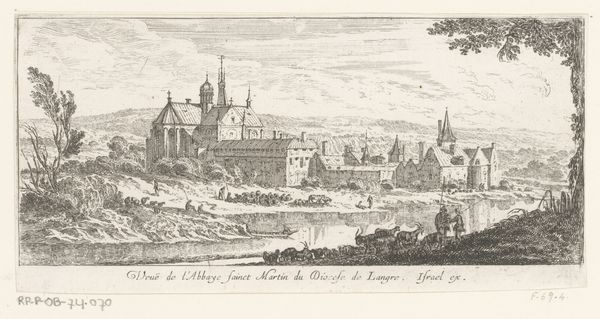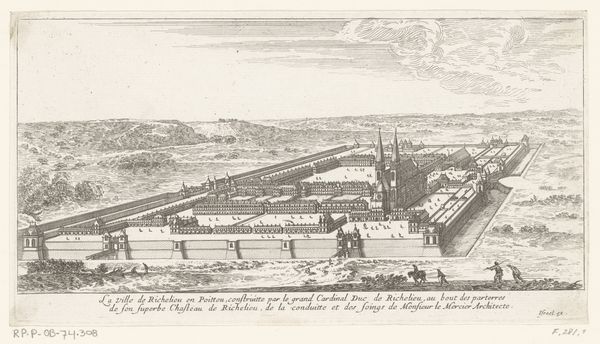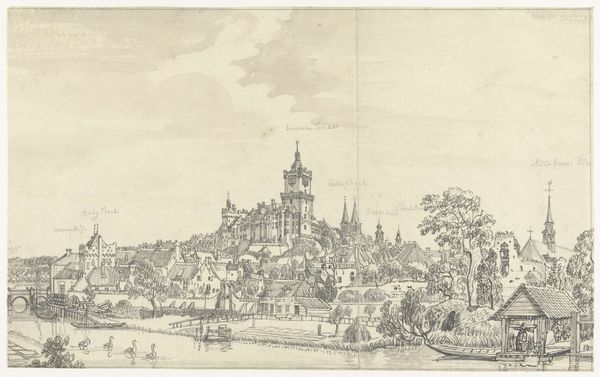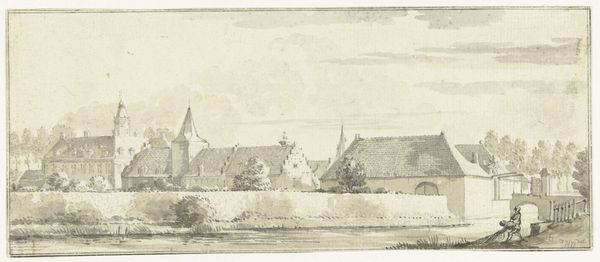
drawing, engraving
#
drawing
#
baroque
#
pen sketch
#
old engraving style
#
landscape
#
engraving
Dimensions: height 173 mm, width 251 mm
Copyright: Rijks Museum: Open Domain
Curator: I’m immediately drawn to the detailed pen and ink work here. There’s a delicate quality to the entire image. Editor: Indeed. This drawing, titled "Gezicht op kasteel Nieuwen Biesen," by Romeyn de Hooghe, dates back to around 1700. It offers an intriguing peek into the past, showcasing a specific location in exquisite detail, but, for whom? Curator: I’d say for a specific patron with a vested interest. Look at the elaborate rendering of the formal gardens. That reflects Baroque sensibilities, surely designed to signal control over nature, but also the order and reason prized at the time, particularly among the aristocratic classes. This isn't just a portrait of a building; it's a carefully constructed display of power. Editor: I see it somewhat differently, and more holistically, focusing on symbols, per se, rather than pure visual detail. I mean, that enormous blank banner floating at the top... isn't it fascinating? Its emptiness practically screams with possibility! A name? A motto? This wasn't just a portrait, it was perhaps intended as a symbol of future aspirations or ongoing legacy. Curator: Perhaps. Or, realistically, the banner allowed later owners to stamp it with their seal of approval. Think about the image in the broader context of the 18th century’s political upheavals and rapidly shifting aristocratic lines, such banners were as often used to signal new ownership, or alliance, as to indicate pure power or control. Editor: Still, the visual language points toward something…unresolved. Consider the formal layout itself: regimented yet softened by those almost cloud-like trees along the bottom border. They represent perhaps a concession of nature? Or our ultimately fleeting control of it, for all of the rigid walls of architecture? Curator: Yes! This brings up an essential question about such commissioned views. We tend to admire their exactitude, but these aren't "objective" records. De Hooghe selected a perspective, chose details to amplify, and no doubt flattered the estate. How do the social agendas shape what is being presented and preserved for posterity? Editor: A good point! To look beyond appearances in our search of deep, true meaning. So perhaps both banner and the manicured nature speak of an ideal which never quite holds solid to true life. Curator: So true! These visualizations offer ideal and very curated views that reveal aspirations, or idealized views rather than unbiased truth. A glimpse into history. Editor: Well, thank you for showing a social structure behind this intriguing building and for helping unveil its more significant, iconic aura!
Comments
No comments
Be the first to comment and join the conversation on the ultimate creative platform.

